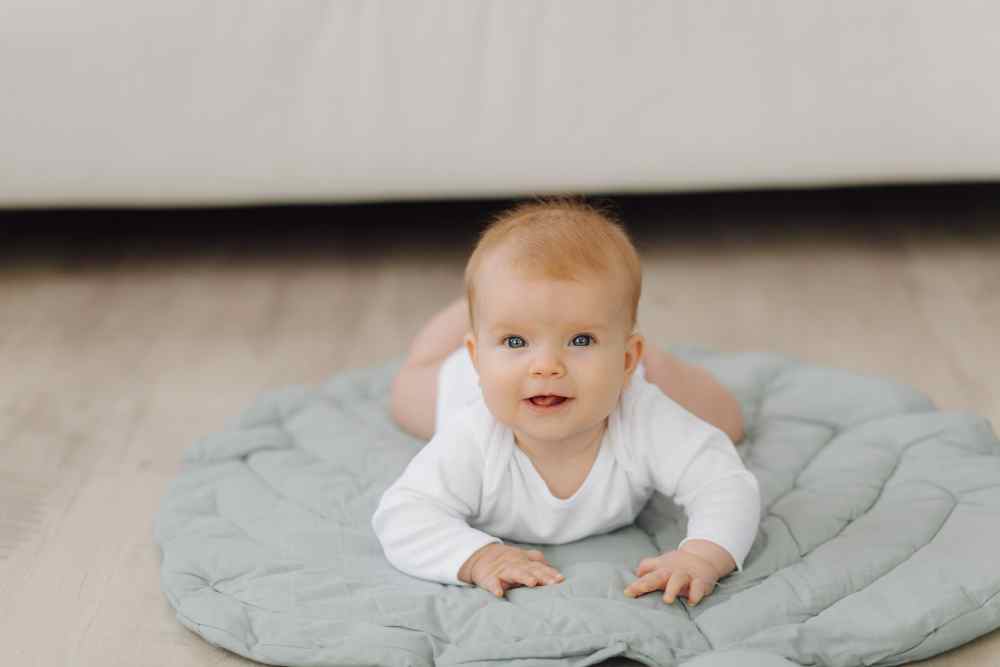Tummy time, as the name suggests is placing the baby on his stomach when he is awake. The exercise can help your baby develop strong neck and shoulder muscles and promote his motor skills. Tummy time also helps prevent the back of the baby’s head from developing flat spots.
When the baby’s head is left in the same position for long periods of time, the skull bone plates might move in a way that creates a flat spot on the head. When you put your baby in this position, he might not enjoy it but it eventually helps the baby lift their head, sit up, crawl and walk. Make sure your baby is awake during tummy time and under your careful watch.
When should you start tummy time?
As per the American Academy of Pediatrics, the tummy time for babies should begin the day they come back from the hospital. But make sure you consult your Pediatrician.
For how long should the baby do tummy time each day?
You should encourage your baby to work his way up for about 15 minutes in total each day. You can divide these 15 minutes into two-three sessions. As your baby grows older, you can leave him on his belly for longer, as older babies need more time on their tummies to build strength.
How to do tummy time
– The ideal time to practice tummy time is after your baby wakes up from a nap or following a diaper change.
– Clean a small area on the floor and place the baby on his tummy on a clean towel or playmat.
– You can surround the baby with some toys to keep him engaged.
– You can keep the baby in this position for three-five minutes, two to three times a day.
– Once your baby starts enjoying the tummy time, try to increase the time.
– NEVER put your baby to sleep on his stomach. Sleeping in this position can significantly increase the risk of sudden infant death syndrome (SIDS).
How to boost tummy time
– Get down on the floor with your baby face to face or side by side. Chat with him and offer him some special toy
– Place an unbreakable mirror in front of your baby so that he can see his own fascinating face. Kids usually get excited by seeing their face in the mirror.
– Tempt the baby by circling him with toys around him. This will encourage him to reach for the toys, which will help develop different muscles necessary to sit up, crawl and walk.
– You can place a pillow under his chest and arms if the baby protests the tummy time initially-
– You can also place the baby on your tummy while you lie on your back.
Benefits of tummy time
-As mentioned above, tummy time helps prevent forming flat spots on the baby’s head.
– It allows the baby to work on different muscles than those he would use while on his back. Tummy time can also be called baby push up which helps your baby develop muscles in his arms, shoulders, upper back and neck.
– It helps set the stage for motor skills like reaching, rolling over, crawling and sitting up.
Source: TOI
![]()











